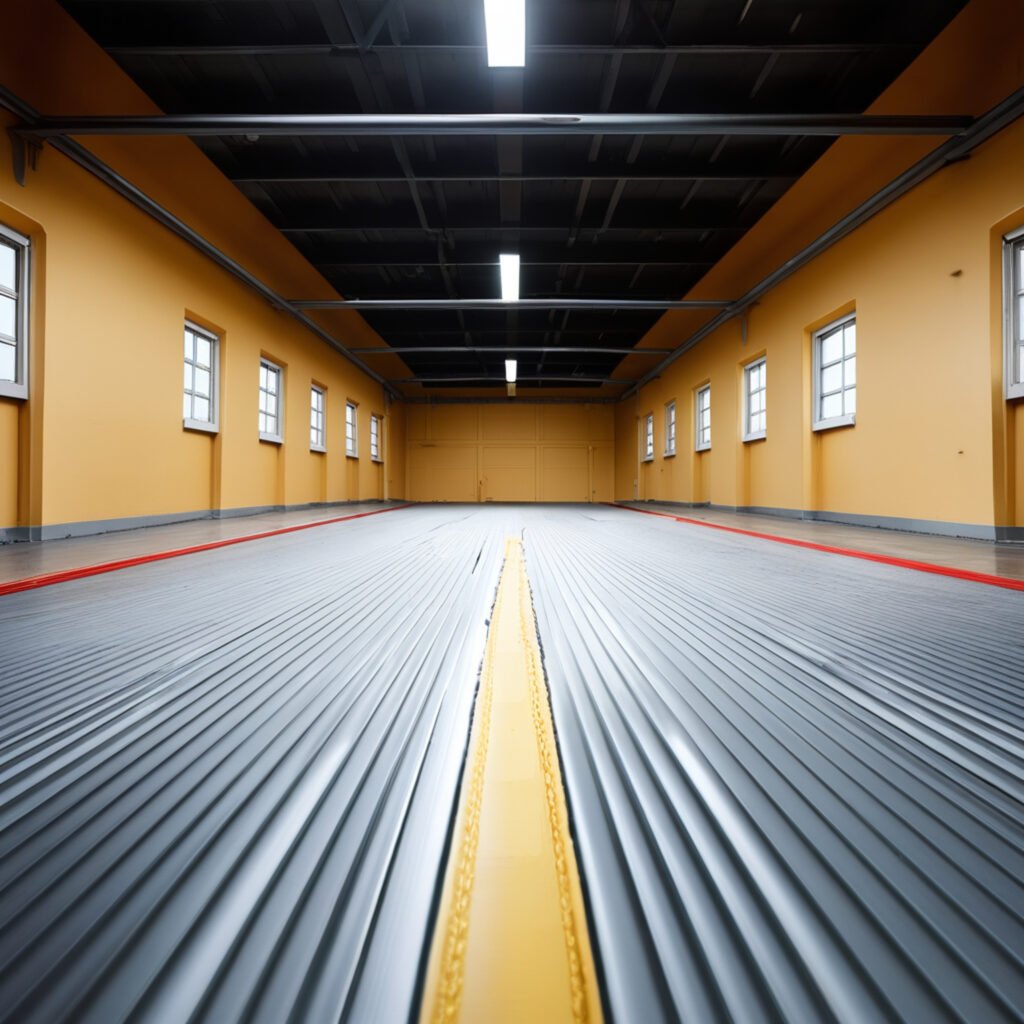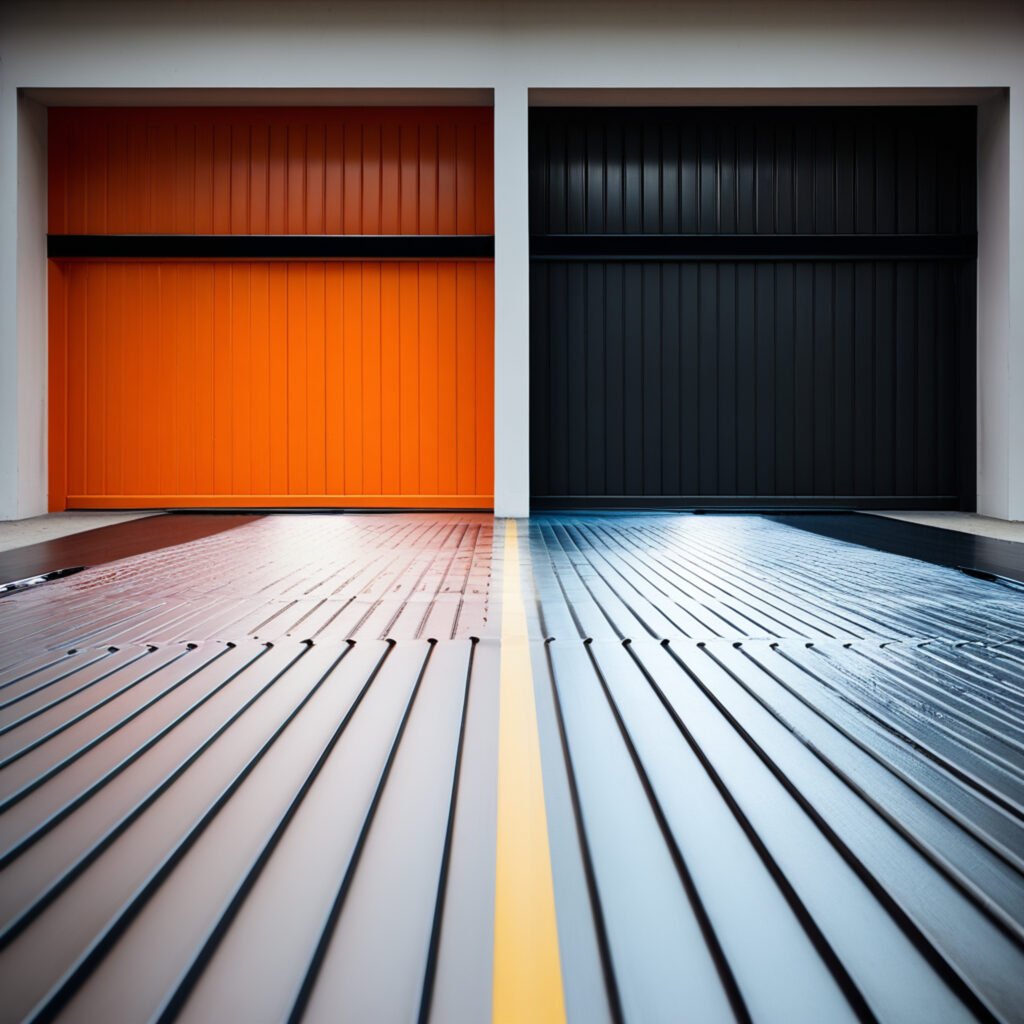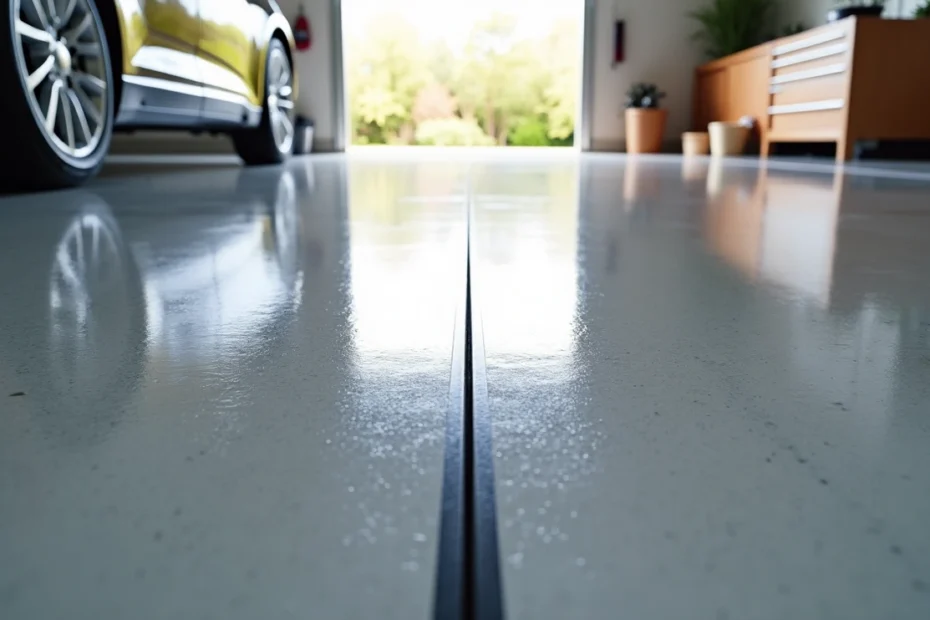Your garage’s look and your budget will be substantially affected by your choice between garage floor epoxy vs polyaspartic coatings. These two coatings top the list of most popular options for garage floors today, and knowing their benefits will help you pick the right one.
The differences between polyaspartic vs epoxy are quite striking. Premium polyaspartic coatings like Floortex™ prove to be four times stronger than basic epoxy floor coatings and can last over a decade. Basic epoxy coatings need to be completely redone after just a few years. Polyaspartic coatings cure much faster than epoxy and let you use your garage within a day, while epoxy takes longer to cure. Both materials serve their purpose well, but systems that use them together create an extra-tough and good-looking solution that handles heavy garage use.
This piece will get into the real differences in how long they last, what it takes to install them, and how much they cost. You’ll learn everything you need to make the right choice for your garage floor that matches your needs and fits your budget, whether you’re fixing up your garage or building from scratch.
Understanding Epoxy vs Polyaspartic Garage Floor Coatings
Epoxy and polyaspartic garage floor coatings protect concrete surfaces differently because of their unique chemical makeup.
What is epoxy flooring, and how does it work?
Epoxy flooring uses two main components: resin and a hardener. These components mix and create a chemical reaction called polymerization. This process creates a strong, plastic-like material that sticks to prepared concrete. The molecules cross-link during curing and give epoxy its toughness and wear resistance.
Quality epoxy coatings contain different percentages of volume solids. Products with 85-100% volume solids create tougher surfaces. The coating takes 24-72 hours to cure, and complete hardening can take up to seven days.
What is polyaspartic flooring and its composition?
Polyaspartic coatings are modern two-component polymer systems created in the 1990s. These coatings started as protection for steel bridges against corrosion. They are a type of aliphatic polyurea that forms by mixing aliphatic polyisocyanates with polyaspartic esters (aliphatic diamines).
Polyaspartic coatings’ chemical structure makes them UV stable and flexible. Manufacturers can adjust the ester amount to control drying times and VOC emissions. Most polyaspartics have 85% volume solids that create a tough protective surface.
Key differences at a glance
- Durability: Polyaspartic coatings flex more and resist chipping, while epoxy is rigid and can scratch more easily.
- Curing Time: Polyaspartic becomes tack-free in 1-2 hours, but epoxy takes 8-24 hours.
- UV Stability: Polyaspartic resists yellowing well, unlike epoxy, which fades in sunlight.
- Cost: Epoxy costs between $4-$7 per square foot, while polyaspartic runs $6-$9.
- Installation: Epoxy gives more working time for DIY projects. Professionals must apply polyaspartic quickly because it cures fast.
When to choose each type of coating
Choose epoxy for your garage floor if:
- You have a limited budget
- You want to do it yourself
- You need many colors and decorative choices
Opt for polyaspartic if:
- Your garage gets lots of sunlight
- You need to use the floor quickly (ready in 24 hours)
- You want the best chemical and abrasion resistance
- You need a coating that works in extreme temperatures
Top installers often use both—they apply epoxy as a base coat to bond with concrete, then add polyaspartic as a topcoat to protect better.
Durability Comparison: Which Coating Lasts Longer?

Durability becomes the key decision factor when homeowners choose garage floor coatings. Let’s get into how polyaspartic and epoxy coatings hold up under different conditions that test how long they last.
Impact and abrasion resistance
Polyaspartic coatings protect against impacts and abrasions about four times better than standard epoxy coatings. Epoxy’s hardness can actually work against it. The same rigid properties that make it seem tough lead to easier scratching. Polyaspartic coatings work differently. They stay slightly flexible and absorb impacts instead of cracking under pressure.
Chemical resistance capabilities
Both coatings resist chemicals well and protect concrete from common garage spills. Polyaspartic does a better job protecting against oil, gasoline, and battery acid. Epoxy still handles industrial chemicals and solvents well. You can match polyaspartic performance with specialized chemical-resistant epoxies in extreme environments.
Temperature tolerance and flexibility
Polyaspartic coatings perform well in extreme temperatures. Epoxy needs stable conditions between 50-90°F to install and perform properly. Polyaspartic’s natural flexibility (140-150% elongation) lets it move with concrete during temperature changes without cracking. Epoxy’s rigid structure can’t do this.
UV stability and yellowing prevention
UV stability shows the biggest durability difference between these coatings. Sunlight makes epoxy coatings yellow and fade, sometimes within months after installation. Polyaspartic coatings contain aliphatic compounds that block UV damage. They stay clear for years.
Expected lifespan of each coating type
A well-installed polyaspartic floor system lasts 10-20 years with minimal upkeep. This makes it worth the higher upfront cost. Standard epoxy installations need replacement or major maintenance after 5-10 years. This happens even faster in high-traffic areas or garages that get sun exposure.
Both coatings boost concrete durability, but polyaspartic beats epoxy in most durability measurements.
Installation Process and Practical Considerations
The quality and timeline of your garage floor coating project depend heavily on how it’s installed. You should know everything about the practical side before choosing between options.
Application methods and complexity
The success of coating relies on proper concrete preparation. Both systems need diamond grinding to create a textured profile for adhesion. You can complete one-day polyaspartic installations quickly, but they might not resist moisture well. Professional epoxy-polyaspartic hybrid systems usually take two days. The original day involves grinding and applying epoxy primer with flake broadcasting. The second day focuses on polyaspartic topcoats.
Curing times and garage downtime
These coatings differ mainly in their curing times. Your epoxy floor needs 24-48 hours before you can walk on it and takes up to seven days to cure completely. Polyaspartic coatings let you walk on them in just 4-6 hours. You can park your car on them within 24 hours when it’s warm. This quick turnaround makes polyaspartic floors perfect especially when you have limited garage downtime.
DIY possibilities vs professional installation
Epoxy’s slower setting time makes it suitable for DIY projects. Polyaspartic coatings need professional installation because they set too quickly. Most coating failures happen because people don’t prepare the surface properly. Professional installation is worth the investment if you want lasting results.
Seasonal application limitations
Your epoxy installation needs concrete temperatures of at least 50-55°F. Polyaspartic coatings work year-round and can handle temperatures as low as -40°F. They just take longer to cure when it’s cold.
Cost Analysis: Polyaspartic vs Epoxy Investment

Price tags don’t tell the whole story between polyaspartic and epoxy costs for your garage floor project. A deeper look at expenses reveals a clearer financial picture.
Original installation costs breakdown
Epoxy garage floor coatings range from $3.00 to $12.00 per square foot. Most two-car garage installations total $1,600-$5,800. Polyaspartic systems cost $5.00 to $15.00 per square foot, which brings two-car garage totals to $2,000-$6,900. Standard epoxy installations need $200-$500 for preparation work. Materials add another $800-$1,200, while labor costs run $500-$1,300.
Long-term maintenance expenses
Polyaspartic’s higher price point often scares homeowners away. Notwithstanding that, its extended durability creates major savings over time. Polyaspartic floors last 10-20+ years compared to epoxy’s 5-10 year lifespan. The annual cost calculation tells a different story: a $3,000 polyaspartic floor lasting 20 years costs $150 annually. A $2,000 epoxy floor needing replacement every 7 years runs $285 yearly.
Return on investment comparison
Both coatings boost property value substantially. HomeAdvisor reports epoxy garage floors add about $8.00 per square foot to a home’s resale value. Quality garage improvements could increase a $300,000 home’s value by 2%, equaling $6,000. This creates an ROI between 100-200% on the original investment.
Value factors beyond price
The National Association of Realtors found 80% of potential buyers rate garage improvements as “important” or “very important”. Beyond resale value, polyaspartic’s resistance to UV damage, chemicals, and temperature changes offers peace of mind. While this benefit proves nowhere near easy to measure financially, it remains valuable for homeowners looking for long-term solutions.
Conclusion
Your choice between epoxy and polyaspartic garage floor coating depends on your priorities, timeline, and budget. Both options beat bare concrete hands down, and polyaspartic stands out as the most durable option. Its strength is four times greater than epoxy, with better UV resistance and flexibility. Many homeowners find polyaspartic’s premium price justified by these advantages.
Epoxy makes sense too, especially when you have DIY plans or budget constraints. You’ll get more working time for self-installation, and it provides good chemical resistance and durability with proper application.
Professional installers often suggest a smart middle ground. They recommend using epoxy as a base layer to bond well with concrete and adding polyaspartic as a protective top coat. This approach combines each material’s strengths while reducing its weaknesses.
Your timeline plays a big role in this decision. Polyaspartic lets you use your garage within 24 hours. Epoxy needs a week or longer to cure fully. This becomes extra important during seasonal work since polyaspartic works year-round, while epoxy needs specific temperatures.
Polyaspartic costs more upfront but lasts 10-20+ years compared to epoxy’s 5-10 years. This makes it more cost-effective over time. The yearly cost breakdown shows polyaspartic as the smarter long-term investment for most garage floors.
Looking at durability, installation needs, curing time, and lifetime costs, polyaspartic coatings offer better value for most homeowners. But the best choice comes down to your situation, priorities, and garage use. Whatever you pick, both options will revolutionize your garage floor’s appearance, function, and value.
